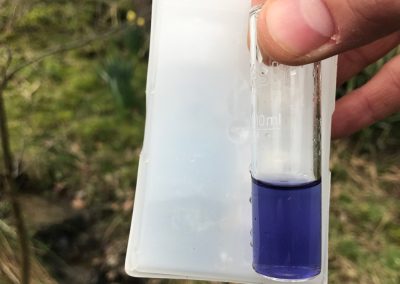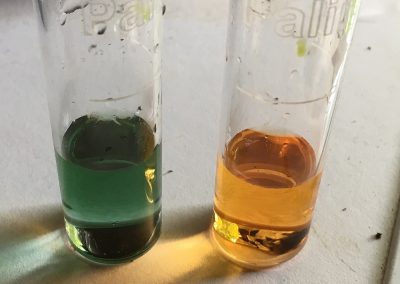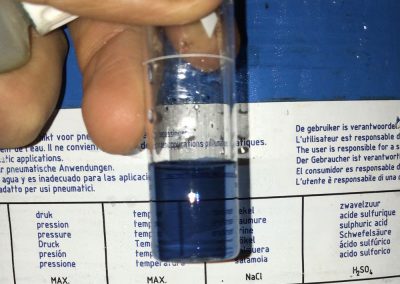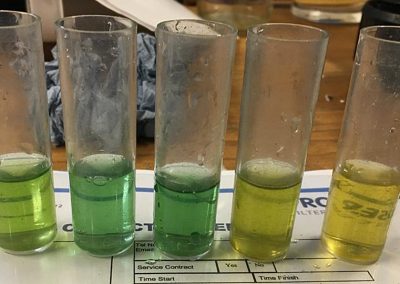A brief description
pH in its literal translation stands for “power of hydrogen”.
Full Description
It is a figure that expresses the alkalinity or acidity of a solution.
It is a logarithmic scale where a figure of 7 is neutral. A figure less than 7 is acidic, higher than 7 is alkaline. Being a logarithmic scale a pH of 6 is 10 times more acidic than pH=7 and a pH of 5 is 10 times more acidic than a pH=6. So if your drinking water has a pH of 5 it is 100 times more acidic than neutral water with a pH of 7.
It is generally well known that acids may be used to dissolve metals and even a level between 6 – 6.5 may have a devastating effect on soft metals such as copper. If your drinking water is acidic you may well see a characteristic blue/green stain appearing on copper pipes. In the longer term the corrosion may cause the pipes and hot water cylinders to perforate if made from copper.
The limits for drinking water in the UK are for a pH level between 6.5 and 8.5.
High pH levels generally do not cause a problem. Indeed some say that it slows down the ageing process, on the flip side however it may also be the cause of gastrointestinal issues and skin irritations.
Signs of low pH-
• Sour taste
• Leaks in plumbing
• Corrosion
• Blue/green staining
Signs of high pH-
• Reduced water flow
• Scale/deposit build up on kitchen appliances and pipework
• Bitter taste
In Yorkshire you are much more likely to have acid water, which is relatively easy to correct.
We simply keep the acid water in contact with a calcium carbonate material and this will neutralise the water and self regulate at a neutral point.
If you notice any of the above, contact us today and we will be happy to help.
To view our pH correction product page, click here.
Posted by Kirsten Scott, 19.03.2020




